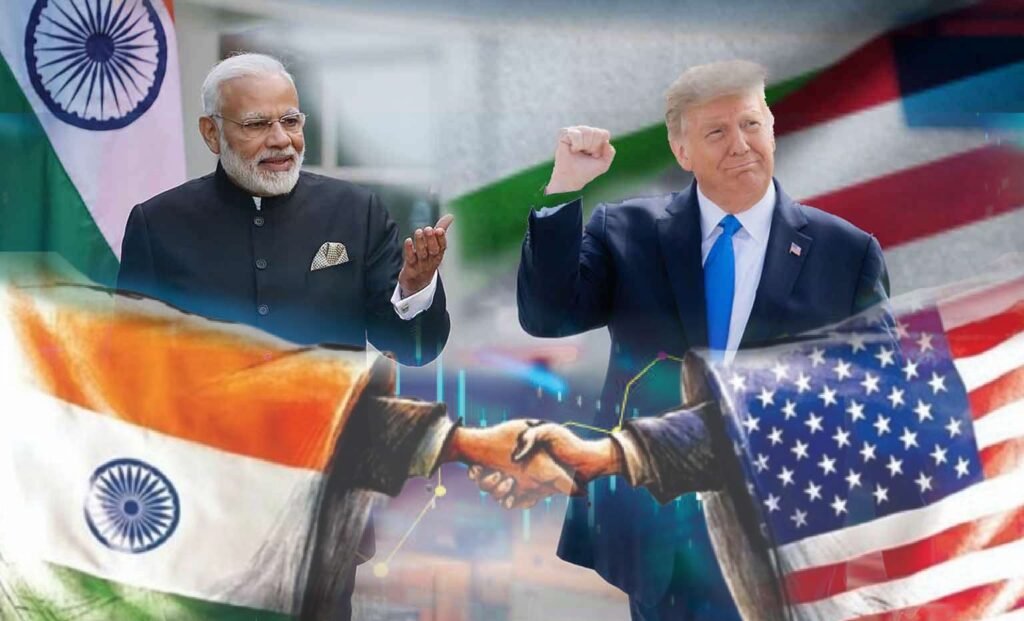Indian Markets Eye Recovery as U.S. Tariffs Trigger Economic Caution
Indian equity markets have shown signs of recovery after a prolonged period of losses, with key benchmarks posting gains despite heightened concerns over global trade disputes. The rebound comes in the shadow of the United States’ decision to impose tariffs of up to 50% on selected Indian exports — a move that has injected fresh uncertainty into bilateral trade relations.
Market analysts attribute the upturn to value-buying by domestic investors, though they caution that the broader sentiment remains fragile. The combination of global economic headwinds, volatile currency movements, and the threat of sustained tariff measures continues to weigh on investor confidence.
Tariffs and Their Economic Fallout
The U.S. decision to sharply raise import duties on certain Indian goods represents a significant inflection point in trade ties. While Washington maintains that the tariffs are intended to correct trade imbalances, Indian officials have called the measures “unjustified” and “harmful” to both economies.
The products affected span multiple sectors, from textiles and metals to agricultural commodities, many of which are integral to India’s export earnings. Economists warn that beyond the direct financial impact, the policy sends a signal that could disrupt investor sentiment and complicate India’s role in global supply chains.
Market Behaviour and Investor Strategy
The current upswing in equities is widely seen as a technical correction rather than a sign of sustained optimism.
We are witnessing selective buying in undervalued sectors, but the market remains highly sensitive to trade-related developments,”
Mumbai-based investment strategist.
Export-oriented industries, including textiles, steel, and IT services, are likely to face the most pressure. Conversely, sectors driven by domestic demand may prove more resilient, assuming inflation stays manageable.
Rupee and Inflation Dynamics
The Indian rupee has experienced noticeable volatility, influenced partly by foreign portfolio outflows in response to the tariff decision. While a weaker rupee can make Indian goods more competitive abroad, the advantage may be offset by increased costs of imported raw materials, potentially fuelling inflation.
The Reserve Bank of India (RBI) is expected to monitor currency stability and inflationary pressures closely, with any sudden intervention likely to shift market momentum.
Global Ripple Effects
India’s market performance is shaped not only by domestic developments but also by broader global trends. Continuing U.S.-China trade frictions and economic slowdowns in other regions create both risks and opportunities for emerging markets.
A protracted tariff conflict could encourage multinational companies to diversify supply chains, creating openings for Indian manufacturers. However, the immediate disruption to export flows could overshadow potential long-term benefits.
Policy and Diplomatic Options
India is expected to pursue diplomatic engagement to de-escalate the trade dispute. Previous negotiations between New Delhi and Washington have alternated between cooperative breakthroughs and impasses over issues like agricultural access, digital trade, and intellectual property rights.
In the interim, policy experts have suggested targeted relief measures for affected sectors, alongside structural reforms aimed at enhancing competitiveness. While the government has not confirmed any retaliatory steps, officials have signalled that all policy tools remain under consideration.
Investor Guidance
Financial advisors are urging investors to adopt a cautious, diversified approach, particularly avoiding overexposure to sectors directly linked to exports. Institutional investors, meanwhile, are expected to keep a close watch on global economic indicators before making large allocations.
The recent market rebound offers temporary relief but does not erase the challenges posed by shifting global trade dynamics. With tariff negotiations unresolved and global economic conditions still uncertain, both policymakers and market participants face a period of careful navigation.
Read the full INA explainer: Indo-US Trade War – Why It Matters More Than Ever for India for detailed insights on the economic and policy stakes.


